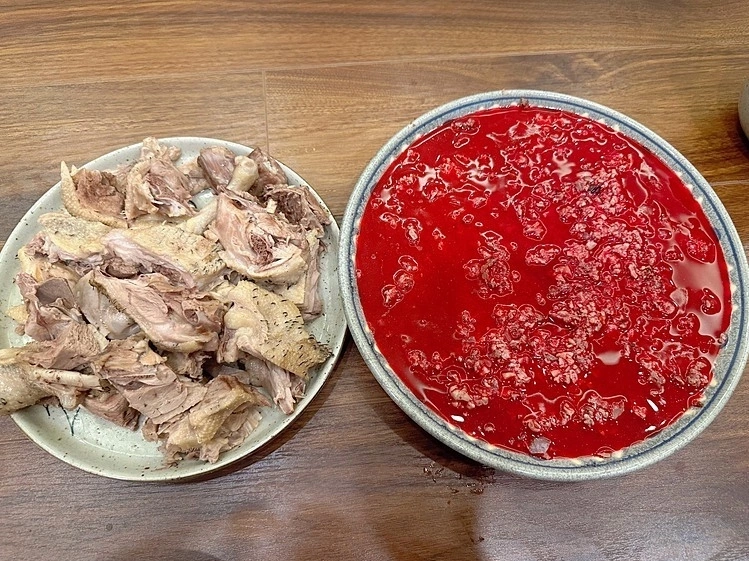A representative of the Hung Yen Department of Health confirmed the information on 16/7. The incident occurred on 5/7 and 6/7, when 17 residents of An Vi and Dong Ky villages dined at three adjacent eateries in Dong Ky village, Quynh An commune. Subsequently, 6 individuals were treated at hospitals in Hung Yen and Hanoi due to unusual symptoms. By 8/7, two had died.
The deceased were men, aged 51 and 55, both exhibiting high fever, headaches, and digestive problems. The 51-year-old man was taken to Phu Duc General Hospital (Hung Yen) with an initial diagnosis of meningitis. His condition worsened despite being transferred to a higher-level hospital for treatment. He was later brought home and passed away.
The other man was admitted to the Emergency Department of Quynh Phu General Hospital in a coma. His condition deteriorated, and his family also brought him home.
Four other individuals are currently being monitored and actively treated at Thai Binh General Hospital, the National Hospital of Tropical Diseases, and Bach Mai Hospital.
On 15/7, the Food Safety Sub-Department of the Hung Yen Department of Health established two working groups to investigate, verify information, trace the origin of the breeding and slaughtering facilities, and collect samples for testing. Authorities suspect the victims contracted streptococcus suis.
 |
Blood pudding poses a health risk. Illustration: Thuy Quynh. Thuy Quynh |
Blood pudding poses a health risk. Illustration: Thuy Quynh. Thuy Quynh
Streptococcus suis is a zoonotic disease; there is no evidence of human-to-human transmission. Most patients are involved in slaughtering, consuming blood pudding, or undercooked pork dishes. Some cases involve individuals who neither consumed blood pudding nor slaughtered pigs. The cause is consuming re-heated contaminated pork or contact with infected pigs through skin lesions or scratches during processing.
In severe cases, the disease can rapidly progress to septic shock, circulatory collapse, hypotension, severe coagulopathy, generalized purpuric rash, embolism, multiple organ failure, coma, and death.
Many believe that avoiding pig blood pudding and opting for poultry or goat blood pudding is safer. However, many patients contracted streptococcus suis despite only consuming poultry blood pudding. This is because pig blood might be mixed in during preparation or the same utensils are used, leading to contamination.
Furthermore, many believe home-raised pigs are safe for blood pudding consumption. Health experts confirm that all pig breeds are at risk of streptococcus suis infection. The bacteria often reside in the pig's throat without causing illness, a condition known as "healthy carrier pigs." When pigs become infected, the bacteria are present in their blood and meat, and if not thoroughly cooked, consumers are at high risk of infection.
For prevention, thoroughly cook pork, avoid slaughtering sick or dead pigs of unknown causes, and refrain from eating raw dishes, especially pig blood pudding. Use protective gear (gloves) when slaughtering and processing raw pork.
Thuy Quynh












